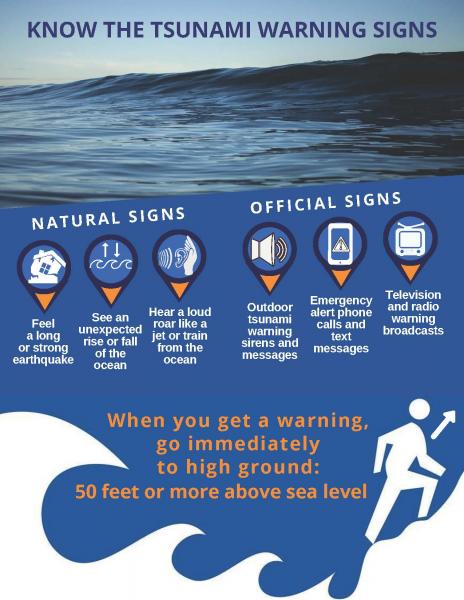-
About Homer
-
- Americans with Disabilities Act Compliance Program City Campgrounds Community Recreation Hickerson Memorial Cemetery
- Library Parks & Trails Public Safety Fire Police Emergency Information
- Events & Activities City Calendar Library Calendar Recreation Calendar Doing Business in Homer Sister City Program Coast Guard City
-
- Departments
- Government
- How Do I?
How Long Do You Have to Evacuate Before a Tsunami?
Most tsunamis are triggered when earthquakes near the seafloor displace a large amount of water. That water gets pushed out as a series of waves that move outwards in all directions.
If a major earthquake originates far off shore, you may have a couple of hours to get to safety. Out on the sea, the tsunami waves can be hundreds of miles long but no taller than a few feet and travel at the speed of a jet plane, up to 500 miles per hour. When the waves approach land, they will slow down and begin to grow in height.
If a quake hits locally, or the quake causes an underwater landslide in Kachemak Bay, you may only have 15 to 20 minutes.
And NO, YOU CAN’T OUTRUN A TSUNAMI.
MAYBE the world's fastest runners could run 5-minute miles for 5 miles while a terrifying wall of water chases the athlete off the Spit. But most people couldn't. It’s just not possible.
It doesn't really matter how fast the wave is coming in, the point is that once you get a sign of a possible tsunami, you really shouldn't be near the wave in the first place.
Know the warning signals. Don’t ignore them or underestimate the speed of the wave. If the beach starts shaking or the ocean looks or sounds strange, head off the Spit, away from beaches and from Beluga Slough toward highest elevation immediately. Getting to high ground is the only way to survive the monster waves. Linger too long and you may run out of time to find somewhere safe.
Tsunamis can also come in as a series of inundating waves. The second wave of water is often much larger than the first. So wait for the all clear sign from emergency operations personnel before returning to the tsunami zone. Don’t head back in to the zone for that unbelievable selfie midst the devastation. It may be the last selfie you take.



